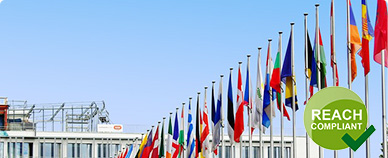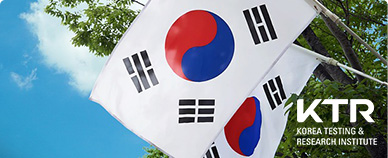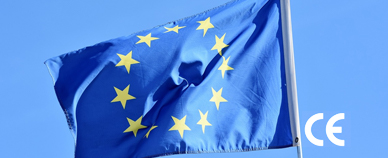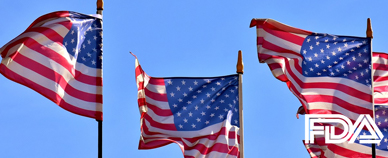Poison Center Notification (PCN)
Legal overview
EU Poison Center Notification (hereinafter referred to as PCN).
As more and more chemical products (e.g. cleaners, paints, adhesives) are placed on the EU market for the daily use of the public and professionals, the incidence of accidental exposure or improper use of hazardous chemicals is also increasing. Each year, the EU Poison Control Centre receives approximately 600,000 calls seeking medical advice and assistance in emergency situations, especially accidental exposure of infants and young children, but approximately 40% of incidents involve problems identifying the ingredients of dangerous mixtures, which can lead to unnecessary overtreatment or hospitalisation for preventive reasons. To this end, many member States have set up a system to collect information from businesses placing dangerous mixtures on the market. However, under the previous legislative regime, there was a lack of harmonised information requirements and companies had to submit similar information multiple times in different formats in different member states' markets. This diversity can also lead to inconsistent information available to medical staff in the event of poisoning or accidental exposure in different member States.
Therefore, On 22 March 2017, Commission Regulation 2017/542 was issued by the European Union. As a new Annex VIII to Regulation (EC) No 1272/2008 on the Classification, Labelling and Packaging of Substances and Mixtures (CLP Regulation), the harmonised information requirement for emergency medical response is implemented. Under the regulation, all mixtures placed on the EU market that present a physical or chemical hazard or a health hazard are required to be notified to the poison centre of the Member States and new requirements are introduced. Attach a unique recipe identifier (UFI) to the hazardous mixture label.
At the end of July this year, the European Commission published a draft regulation proposing a one-year extension of the implementation of the Poison Centre Notification (PCN) for hazardous mixtures for consumer use, that is, from 1 January 2020 to 1 January 2021, for public consultation. The consultation closed on 18 August and has so far shown that most of the feedback is in favour of the proposal. The Poison center Notification Regulation (Commission Regulation 2017/542) has attracted much attention in the EU since its introduction in 2017, and as the original deadline approaches, enterprises exporting to the EU market have also received requests from importers in the EU to notify poison centers.
Corporate obligations and countermeasures
1. When is the PCN notification due?
The submission period of PCN notification is based on the decision of the end use of hazardous mixtures, and enterprises complete the notification before the deadline according to the end use needs of the products placed on the market, the specific deadline is as follows:
Consumer use → January 1, 2021
Professional use → January 1, 2021
Industrial use → January 1, 2024
Enterprises in the notification process to confirm the end use of the mixture has a certain difficulty, should try to collect use information from downstream users, if there is a new use after submission, according to the need for timely update.
2, Which products can not submit PCN?
PCNS are mainly for mixtures placed on the EU market that present a physical and chemical hazard or a health hazard, and are exempt from the following:
p> substance Does not meet CLP requirements; Classification of environmental hazards only; Products for R& only; D and PPORDs; Pressurized gas; Explosives (unstable explosives and explosives in items 1.1 -1.6);
The above exempted products may also be voluntarily notified. With voluntary submission, suppliers can protect confidential business information and also help emergency responders get the information they need to avoid overtreatment.
3. Who needs to submit PCN?
The submitters and responsible parties of PCNS are importers and downstream users (mixture dispensers) in the European Union who place dangerous mixtures on the market. Distributors who only store and place mixtures on the market are not, in principle, required to submit information to the designated authority if they do not carry out any other mixtures activity. However, some distributors who change the brand, repackage the product or place the product in the market of a member state that has not been notified by upstream users will still need to notify the designated authority.
In addition, the responsible body of the PCN can entrust a third party (such as the parent company/head office on behalf of the subsidiary, the consulting body on behalf of the responsible person) to make the submission, but does not exempt from the corresponding responsibility.
4. How to submit PCN?
The PCN aims to harmonize the notification methods of all EU member States, and its form and specific content are as follows:
Unified Poison Center Notification (PCN) format Submission
Unified use of the European Product Classification System (EuPCS) for product classification
Unified use of the submission portal established by ECHA to send directly to the designated authorities of the Member States where mixtures are placed on the market
Unified notification content

The services we provide
- • Assist customers in fulfilling their notification obligations and submit documents in accordance with the notification format;
- • Prepare SDS/ labels that meet the requirements of the latest EU CLP regulations;
- • After the completion of the EU PCN notification, update the SDS/label provided by the enterprise to meet the latest EU CLP requirements;
- • The international team provides multilingual (Chinese, English and Japanese) services.
Zhongbang is one of the earliest institutions in China to engage in compliance consulting services. It has a senior expert team composed of PhDs, Masters, and Bachelor's degrees, and has established branches in the UK, the United States, South Korea, Beijing, Shanghai, Suzhou, Fuzhou, Shenzhen, and other places, forming a global service network layout.
-
Strong technical strength:
A strong team composed of mid to senior technical personnel with professional backgrounds in chemistry, food nutrition and health, medicine, biology, toxicology, environment, and other fields
-
International service level:
A business elite team with multiple languages including English, Japanese, German, and Chinese, efficiently serving international customers
-
Rich compliance experience:
With years of experience in global product and regulatory research in multiple fields, we are able to provide comprehensive and high-level compliance consulting support to various customers
-
Localized service capabilities:
Having multiple branch offices in the UK, USA, South Korea, Beijing, Shanghai, Suzhou, Fuzhou, Shenzhen, etc., we can provide you with services nearby
Service Hotline :400-115-9001
Zhongbang Consulting (Shandong Zhongbang North Management Consulting Co., Ltd.) focuses on product registration and compliance consulting services. With its professional technology, diverse resources, and global network, we are committed to providing regulatory consulting and environmental regulation response services for pharmaceutical, chemical, consumer goods production enterprises, and large multinational corporations. To solve the environmental, health and safety laws and regulations, product quality standards, and other issues faced by enterprises in production, sales, and global trade processes.
Accumulated Customers
18,000+
Distributed in 35 countries and regions
14year
Industry experience
260+
Senior expert team
15+
Subsidiaries
300+
Collaboration Cases
Brand Cases
The choices and trust of over 18000 customers are the driving force for Zhongbang to continuously improve its services. We are willing to grow together with these excellent enterprises
Service Hotline:400-115-9001






































































 Consultation
Consultation
 400-115-9001
400-115-9001